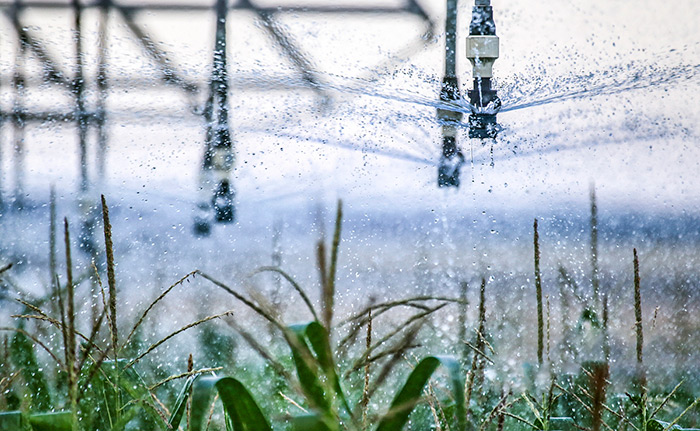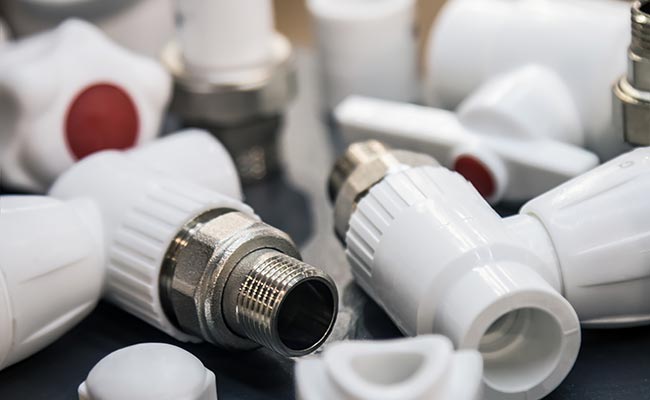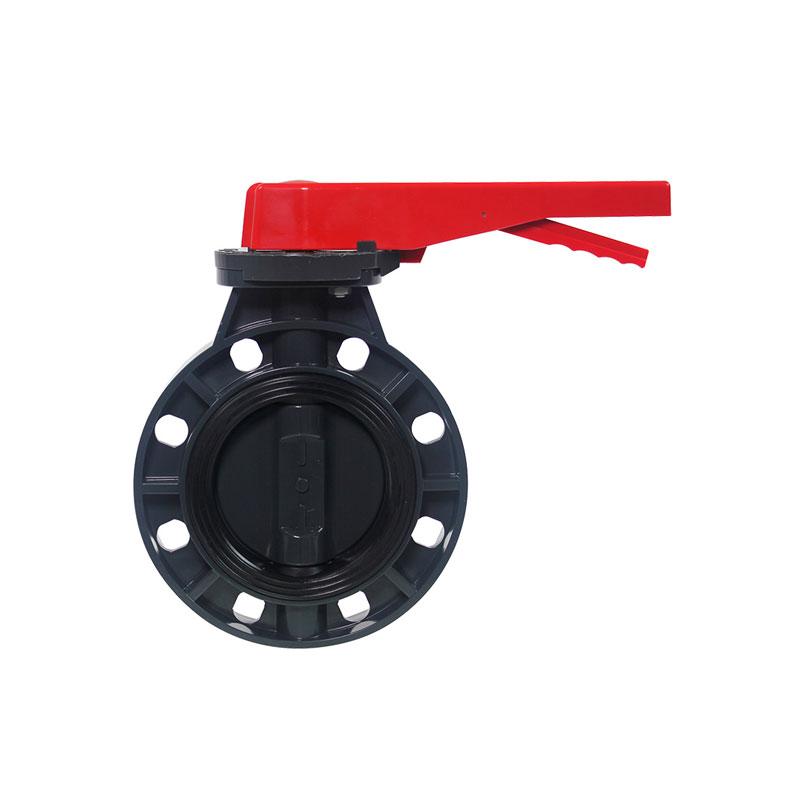
Kuchagua hakiValve ya kipepeo ya PVChufanya mifumo ya umwagiliaji kudumu kwa muda mrefu na kufanya kazi vizuri zaidi. Tafiti za tasnia zinaonyesha kuwa udhibiti sahihi wa mtiririko huzuia nyundo ya maji na kuongezeka kwa shinikizo. Nyenzo zinazostahimili kutu huweka uvujaji wa chini na matengenezo rahisi. Ufungaji rahisi na ujenzi thabiti huokoa wakati na pesa kwa kila mtumiaji.
Mambo muhimu ya kuchukua
- Chagua vali ya kipepeo ya PVC inayolingana na shinikizo la mfumo wako, mtiririko na ubora wa maji ili kuhakikisha umwagiliaji salama na unaofaa.
- Chagua saizi sahihi ya vali na aina ya muunganisho ili kuzuia uvujaji, kupunguza matengenezo, na kuweka maji kutiririka vizuri.
- Sakinisha na udumishe vali yako ipasavyo kwa kufuata mbinu bora za kupanua maisha yake na kuokoa muda na pesa.
Kulinganisha Valve ya Kipepeo ya PVC na Mfumo Wako wa Umwagiliaji
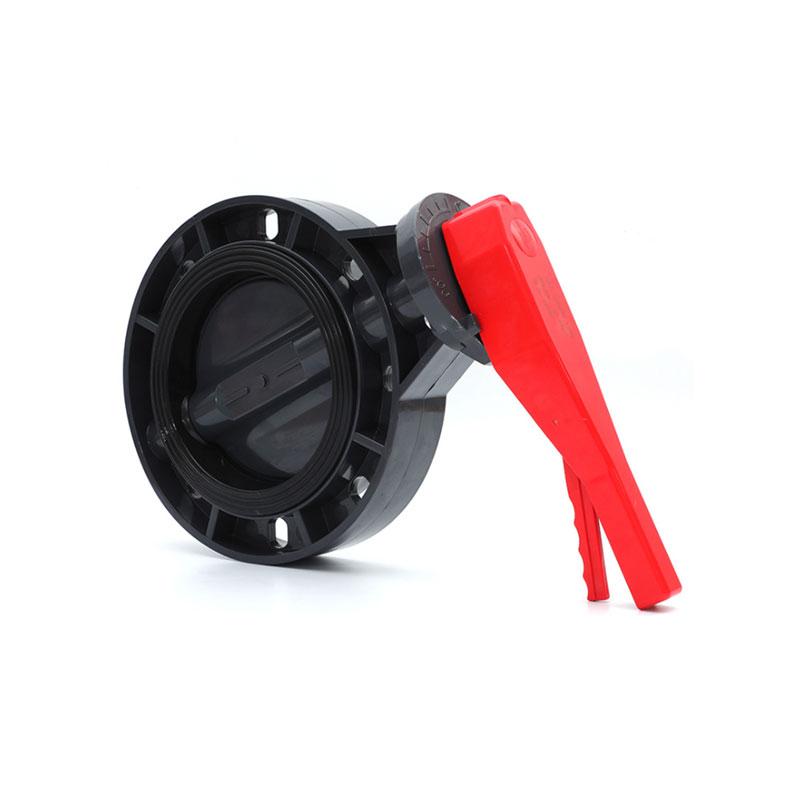
Tathmini ya Kiwango cha Mtiririko na Shinikizo
Kila mfumo wa umwagiliaji unahitaji valve sahihi ili kudhibiti mtiririko wa maji na shinikizo. Vali ya kipepeo ya PVC hufanya kazi vizuri zaidi katika mazingira ya shinikizo la chini, yasiyo ya kutu na yenye joto la chini. Mifumo mingi ya umwagiliaji nyumbani na shambani inafaa hali hizi. Shinikizo la mfumo lina jukumu kubwa katika uteuzi wa valves. Kila vali ina ukadiriaji wa shinikizo, kama vile ANSI au PN, ambayo inaonyesha kiwango cha juu cha shinikizo salama. Ikiwa shinikizo la mfumo linakwenda juu ya kikomo hiki, valve inaweza kushindwa. Kwa mfano, PNTEKPLASTValve ya kipepeo ya PVChushughulikia shinikizo hadi PN16 (232 PSI), na kuifanya kuaminika kwa usanidi mwingi wa umwagiliaji.
Kidokezo: Daima angalia shinikizo la juu zaidi la mfumo wako kabla ya kuchagua vali. Kukaa ndani ya mipaka iliyokadiriwa huweka mfumo salama na kufanya kazi kwa urahisi.
Vali za kipepeo za PVC ni maarufu katika umwagiliaji kwa sababu huanza, kuacha, na kutenga mtiririko wa maji kwa urahisi. Uendeshaji wao wa gharama ya chini na rahisi huwafanya kuwa chaguo bora kwa bustani, nyasi na mashamba.
Kuelewa Ubora wa Maji na Utangamano wa Kemikali
Ubora wa maji huathiri muda gani valve inakaa. Maji safi husaidia valve kufanya kazi vizuri na kudumu kwa muda mrefu. Ikiwa maji yana kemikali, mbolea, au mchanga, nyenzo za valve lazima zizuie kutu na kuongezeka. Vali za kipepeo za PVC hupinga kemikali nyingi zinazopatikana katika maji ya umwagiliaji. Pia hushughulikia matope na chembe nyingine vizuri, ambayo ni muhimu kwa mifumo ya shamba na bustani.
Kumbuka: Kila mara linganisha nyenzo za valvu na kemikali katika maji yako. PVC hufanya kazi vizuri kwa mahitaji mengi ya umwagiliaji, lakini angalia mara mbili ikiwa maji yako yana asidi kali au kemikali zisizo za kawaida.
Kuamua ukubwa wa bomba na aina ya unganisho
Kuchagua ukubwa sahihi wa bomba na aina ya uunganisho huhakikisha usakinishaji usiovuja na rahisi. Mifumo mingi ya umwagiliaji hutumia saizi za kawaida za bomba. Jedwali hapa chini linaonyesha saizi za kawaida za bomba na valve kwa kilimo:
| Ukubwa wa bomba (inchi) | Kipenyo cha ndani (inchi) | Kipenyo cha Nje (inchi) | Ukadiriaji wa Shinikizo (PSI) | Vidokezo |
|---|---|---|---|---|
| 8″ | N/A | N/A | 80, 100, 125 | Bomba la umwagiliaji la kawaida |
| 10″ | 9.77 | 10.2 | 80 | Bomba la umwagiliaji la PVC lililowekwa gasket |
| Aina ya Valve | Safu ya ukubwa (inchi) | Nyenzo | Maombi |
|---|---|---|---|
| Valve ya PVC Butterfly | 2″, 2-1/2″, 3″, 4″, 5″, 6″, 8″, 10″, 12″, 14″, 16″ | PVC | Umwagiliaji wa kilimo |
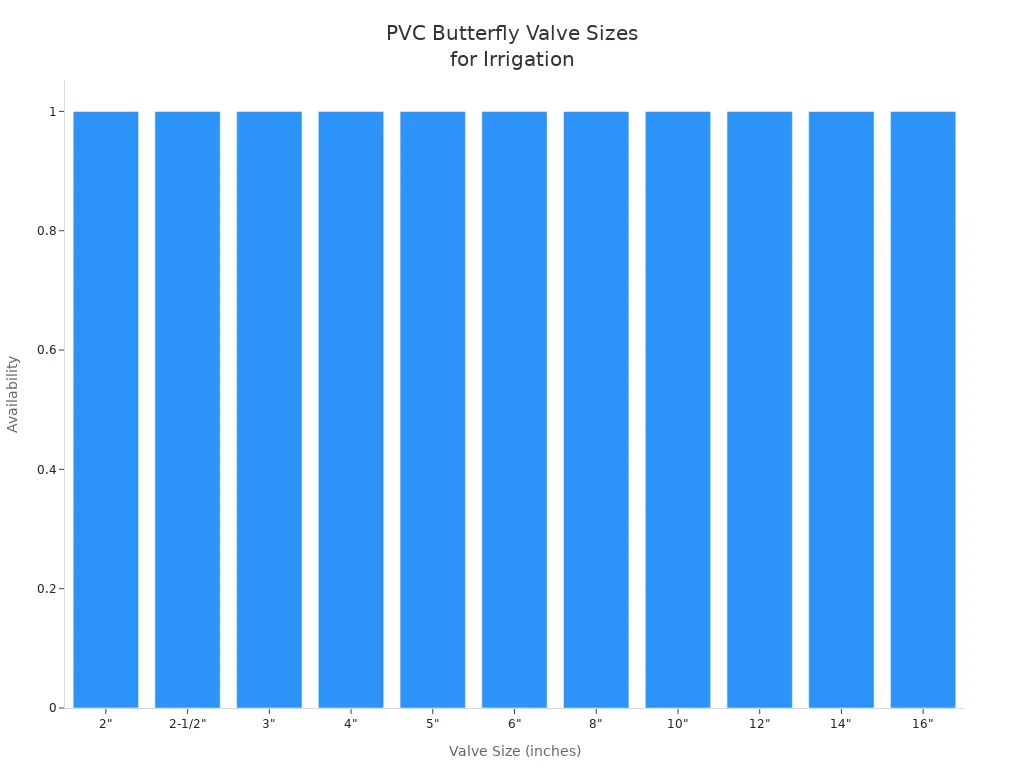
Aina ya uunganisho ni muhimu kwa ufungaji na matengenezo. Kuna aina tatu kuu: kaki, lug, na flanged.
- Vali za aina ya kaki zinafaa kati ya flange mbili na hutumia boliti zinazopita kwenye mwili wa valvu. Wanaokoa nafasi na gharama.
- Vali za aina ya lug zimeweka nyuzi kwa ajili ya kufungia na kuruhusu kuondolewa kwa mabomba ya chini ya mkondo kwa ajili ya matengenezo.
- Valve za aina ya flanged hufunga moja kwa moja kwenye flanges za bomba, na kuzifanya kuwa salama na rahisi kupatanisha.
Upangaji sahihi, matumizi ya gasket, na uimarishaji wa bolt husaidia kuzuia uvujaji na kupanua maisha ya valves. Vali za aina ya Lug hurahisisha matengenezo kwa sababu huwaacha watumiaji waondoe vali bila kusumbua bomba zima.
Kuchagua aina ya uunganisho sahihi huokoa muda wakati wa ufungaji na hufanya matengenezo ya baadaye kuwa rahisi.
Sifa Muhimu za Valve ya Kipepeo ya PVC kwa Umwagiliaji
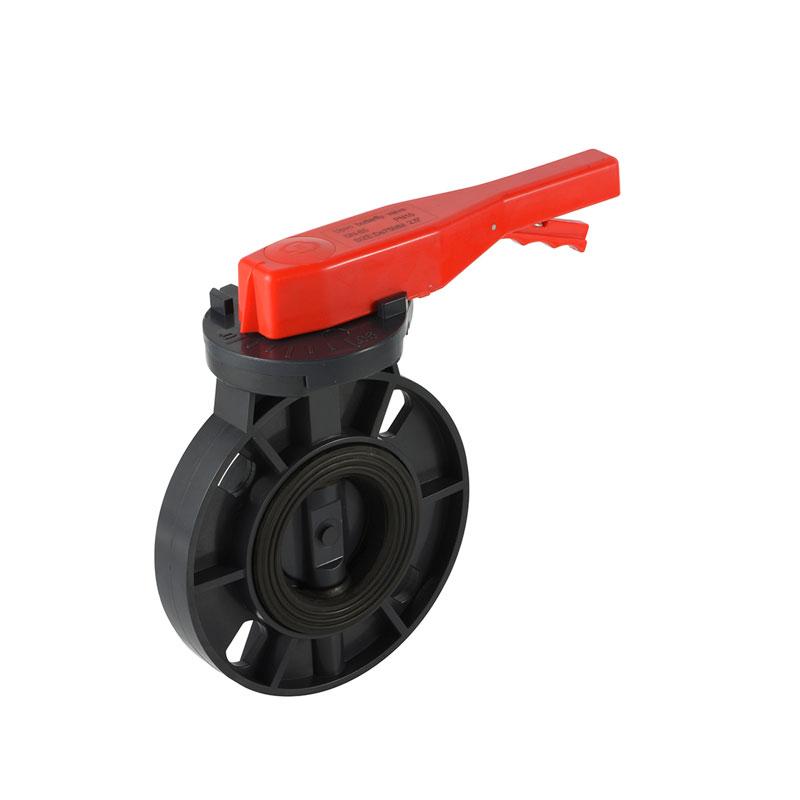
Kwa nini PVC ni Chaguo la Smart
Vipu vya kipepeo vya PVC hutoa faida nyingikwa mifumo ya umwagiliaji. Wanajitokeza kwa ajili ya kubuni yao nyepesi, ambayo inafanya ufungaji rahisi hata katika usanidi mkubwa. Ufanisi wao wa gharama husaidia wakulima na watunza ardhi kuokoa pesa ikilinganishwa na chuma au vali nyingine za plastiki. PVC inakabiliwa na kutu na haina kutu, hivyo hudumu kwa muda mrefu katika mazingira ya mvua. Uso laini wa valves hizi huzuia uvujaji na hufanya kusafisha rahisi.
- Nyepesi kwa utunzaji na ufungaji rahisi
- Gharama nafuu, kuokoa pesa kwa ununuzi na matengenezo
- Inastahimili kutu, inahakikisha uimara katika mipangilio ya umwagiliaji
- Uso laini kwa kuzuia uvujaji na kusafisha kwa urahisi
- Maisha ya huduma ya muda mrefu chini ya hali ya kawaida ya umwagiliaji
- Yanafaa kwa ajili ya maji na kemikali kali, ikiwa ni pamoja na mbolea nyingi
- Utendaji wa kuaminika katika mifumo ya shinikizo la chini
Vali za kipepeo za PVC hutoa matokeo yanayoweza kutegemewa huku zikipunguza gharama, na kuzifanya kuwa chaguo halisi la umwagiliaji.
Kupima Valve kwa Mfumo Wako
Kuchagua ukubwa sahihi wa valve ya kipepeo ya PVC ni muhimu kwa umwagiliaji mzuri. Saizi ya valve inapaswa kuendana na kipenyo cha bomba ili kuhakikisha mtiririko sahihi. Fikiria kiwango cha mtiririko wa mfumo na shinikizo. Tumia fomula kama Q = Cv√ΔP ili kusaidia kubainisha ukubwa unaofaa. Angalia chati na miongozo ya mtengenezaji kila wakati.
- Linganisha ukubwa wa valve na kipenyo cha ndani cha bomba
- Hakikisha valve inasaidia kiwango cha mtiririko kinachohitajika
- Thibitisha kuwa valve inaweza kushughulikia shinikizo la mfumo
- Fikiria aina ya maji na mnato wake
- Angalia nafasi ya usakinishaji inayopatikana
- Chagua nyenzo zinazoendana na maji na kemikali zako
Saizi isiyo sahihi inaweza kusababisha shida kadhaa:
- Kupoteza kwa shinikizo isiyofaa, na kusababisha malfunction au pulsation
- Vali kubwa zinaweza kufungwa polepole sana, na kusababisha mtiririko wa maji usiodhibitiwa
- Valve zisizo na ukubwa huongeza hasara ya shinikizo na gharama za nishati
- Nyundo ya maji na kelele, kusisitiza vipengele vya valve
- Usambazaji duni wa maji na uaminifu wa mfumo
Upimaji sahihi huhakikisha utoaji wa maji sawa na kulinda uwekezaji wako wa umwagiliaji.
Aina za Mwili wa Valve: Kaki, Lug, na Flanged
Kuchagua aina sahihi ya mwili kwa vali yako ya kipepeo ya PVC huathiri usakinishaji na matengenezo. Kila aina ina sifa za kipekee:
| Aina ya Valve | Sifa za Ufungaji | Vidokezo vya Maombi |
|---|---|---|
| Mtindo wa kaki | Sandwiched kati ya flanges bomba mbili; bolts hupitia mwili wa valve | Kiuchumi, nyepesi, si kwa matumizi ya mwisho wa mstari |
| Mtindo wa lug | Uingizaji wa nyuzi huruhusu bolting huru kwa kila flange | Inafaa kwa mwisho wa mstari, hutenga bomba la chini ya mkondo, thabiti zaidi |
| Mtindo wa flanged | Flanges mbili upande wowote; bolts huunganisha flanges za valve kwa flanges za bomba | Inatumika katika mifumo mikubwa, nzito, upatanishi rahisi |
Vali za kaki hufanya kazi vizuri kwa mifumo mingi ya umwagiliaji kwa sababu ya muundo wao wa kompakt na gharama ya chini. Vipu vya lug huruhusu matengenezo kwa upande mmoja bila kuzima mfumo mzima. Valve za flanged zinafaa kwa usanidi mkubwa au ngumu zaidi.
Vifaa vya Kuketi kwa Matumizi ya Umwagiliaji
Nyenzo za kiti ndani ya valve ya kipepeo ya PVC huamua upinzani wake kwa kemikali na kuvaa. Kwa mifumo ya umwagiliaji iliyo wazi kwa mbolea au kemikali za kilimo, vifaa vifuatavyo vinapendekezwa:
| Nyenzo za Kiti | Upinzani wa Kemikali na Kufaa kwa Kemikali za Kilimo |
|---|---|
| FKM (Viton) | Upinzani wa juu, bora kwa kemikali zenye fujo |
| PTFE | Upinzani bora, msuguano mdogo, unaofaa kwa mazingira magumu |
| EPDM | Inadumu, inaendana na anuwai ya kemikali za kilimo |
| UPVC | Upinzani bora, unaofaa kwa mazingira ya babuzi |
Kuchagua nyenzo sahihi ya kiti huongeza maisha ya valve na kuhakikisha uendeshaji salama na mbolea na kemikali nyingine.
Mwongozo dhidi ya Uendeshaji Kiotomatiki
Mifumo ya umwagiliaji inaweza kutumika amamwongozo au otomatiki valves kipepeo PVC. Kila chaguo hutoa faida za kipekee:
| Kipengele | Valves za Kipepeo za Mwongozo | Vali za Kipepeo za Kiotomatiki |
|---|---|---|
| Operesheni | Lever inayoendeshwa kwa mkono au gurudumu | Udhibiti wa mbali au otomatiki (nyumatiki) |
| Gharama | Uwekezaji mdogo wa awali | Gharama ya juu zaidi |
| Matengenezo | Rahisi, rahisi kudumisha | Ngumu zaidi, inahitaji utunzaji wa kawaida |
| Usahihi | Chini sahihi, inategemea mtumiaji | Usahihi wa juu, majibu ya haraka |
| Kufaa | Bora kwa mifumo ndogo au isiyorekebishwa mara kwa mara | Inafaa kwa mifumo mikubwa au ya kiotomatiki |
Vali za mwongozo hufanya kazi vizuri kwa mifumo ndogo au iliyorekebishwa mara kwa mara. Vali za otomatiki hutoa udhibiti bora na ufanisi katika usanidi wa umwagiliaji mkubwa au wa hali ya juu.
Mazingatio ya Ufungaji na Matengenezo
Ufungaji sahihi na matengenezo ya mara kwa mara huweka valve ya kipepeo ya PVC kufanya kazi kwa ufanisi. Fuata mazoea haya bora:
- Linganisha vipimo vya valve na mahitaji ya mfumo.
- Kuandaa mabomba kwa kukata mraba, deburring, na kusafisha mwisho.
- Tumia kisafishaji cha PVC na saruji kwa viungio vilivyo na svetsade ya kutengenezea.
- Kwa miunganisho yenye nyuzi, tumia mkanda wa PTFE na uepuke kukaza kupita kiasi.
- Msaada wa mabomba kwenye pande zote mbili za valve ili kuzuia matatizo.
- Ruhusu upanuzi wa mafuta na ufikiaji rahisi wa matengenezo.
Ukaguzi wa mara kwa mara kila baada ya miezi 6 hadi 12 husaidia doa uvujaji, kutu, au kuvaa. Safisha mwili wa valvu na kipenyo, lainisha sehemu zinazosonga, na ubadilishe sili au viunzi kama inavyohitajika. Mpango wa matengenezo huhakikisha kuegemea kwa muda mrefu.
Vali zilizowekwa vizuri na kudumishwa hupunguza uvujaji, muda wa chini, na ukarabati wa gharama kubwa.
Viwango na Vyeti
Suala la ubora na usalama katika umwagiliaji. Tafuta vali za kipepeo za PVC zinazokidhi viwango vya kimataifa na kikanda:
- DIN (Taasisi ya Deutsches für Normung)
- ANSI (Taasisi ya Kitaifa ya Viwango ya Amerika)
- JIS (Viwango vya Viwanda vya Japani)
- BS (Viwango vya Uingereza)
Vyeti kama vile ISO 9001 na alama ya CE vinaonyesha kuwa vali inakidhi mahitaji madhubuti ya ubora na usalama. Vyeti vya NSF na UPC vinathibitisha kufaa kwa usambazaji wa maji na umwagiliaji. Viwango na vyeti hivi vinahakikisha utangamano, kutegemewa na amani ya akili.
- Tathmini mahitaji ya mfumo kwa kuangalia shinikizo, mtiririko na uoanifu.
- Chagua saizi ya valve inayofaa, nyenzo na aina ya unganisho.
- Sakinisha na udumishe vali ipasavyo kwa matokeo bora.
Uchaguzi wa uangalifu na ukaguzi wa mara kwa mara husaidia mifumo ya umwagiliaji kufanya kazi vizuri, kuokoa maji, na kupunguza gharama kwa muda.
Maswali Yanayoulizwa Mara kwa Mara
Ni nini kinachofanya Valve ya Kipepeo ya PNTEKPLAST PVC kuwa bora kwa mifumo ya umwagiliaji?
Valve hustahimili kutu, husakinishwa kwa urahisi na hushughulikia shinikizo la juu. Wakulima na watunza ardhi wanaamini uimara na ufanisi wake kwa udhibiti wa maji unaotegemewa.
Je, watumiaji wanaweza kufunga valve ya kipepeo ya PVC bila zana maalum?
Ndiyo. Muundo wa kompakt, nyepesi huruhusu usakinishaji wa haraka. Watumiaji wengi wanahitaji zana za msingi pekee ili kupata kifafa salama, kisichovuja.
Aina ya lever ya mpini inaboresha vipi udhibiti wa umwagiliaji?
Lever ya kushughulikia hutoa haraka, marekebisho sahihi ya mtiririko. Watumiaji wanaweza kufungua au kufunga vali kwa zamu rahisi ya digrii 90, kuokoa muda na juhudi.
Muda wa kutuma: Jul-15-2025


